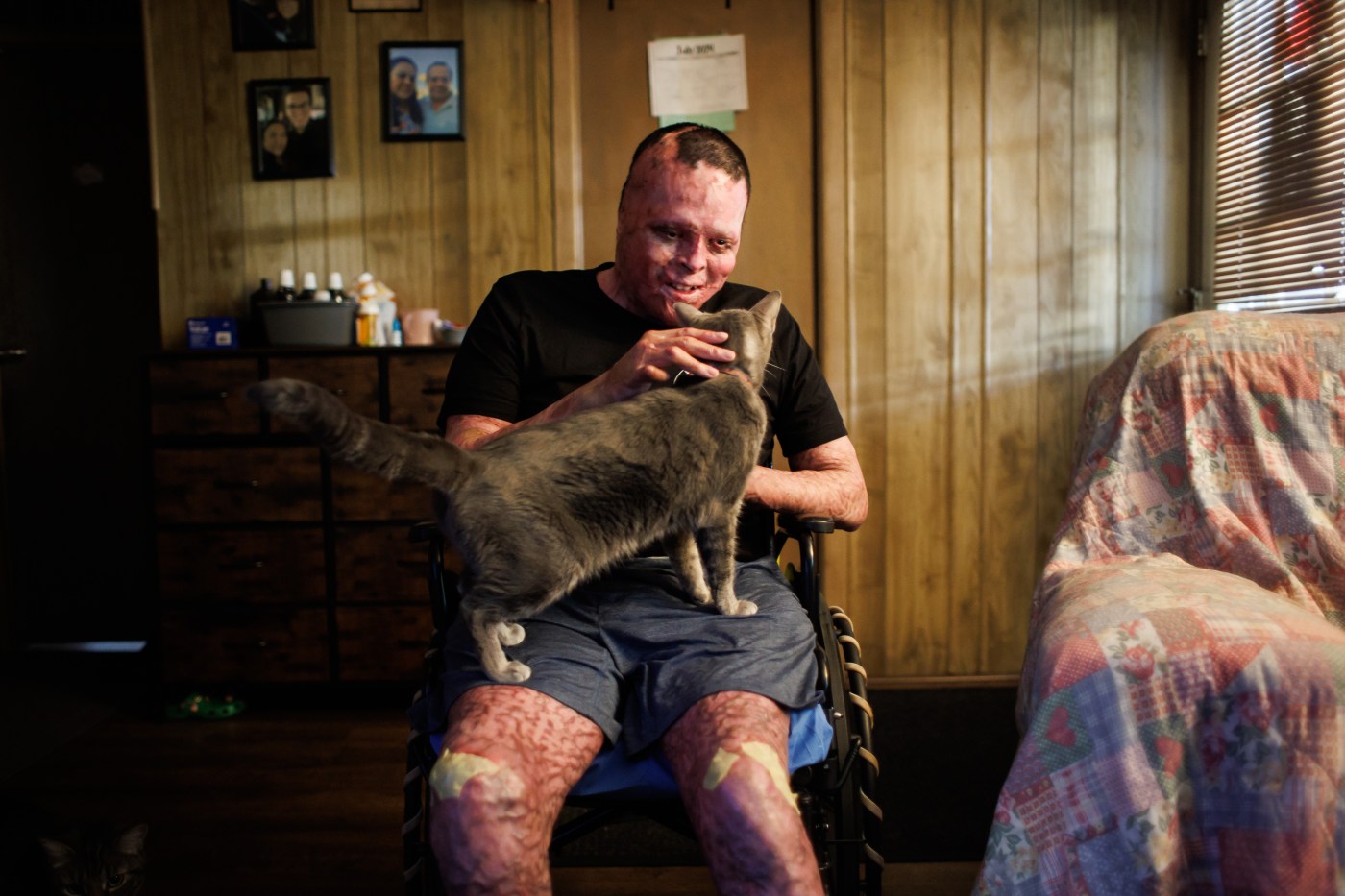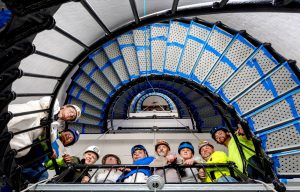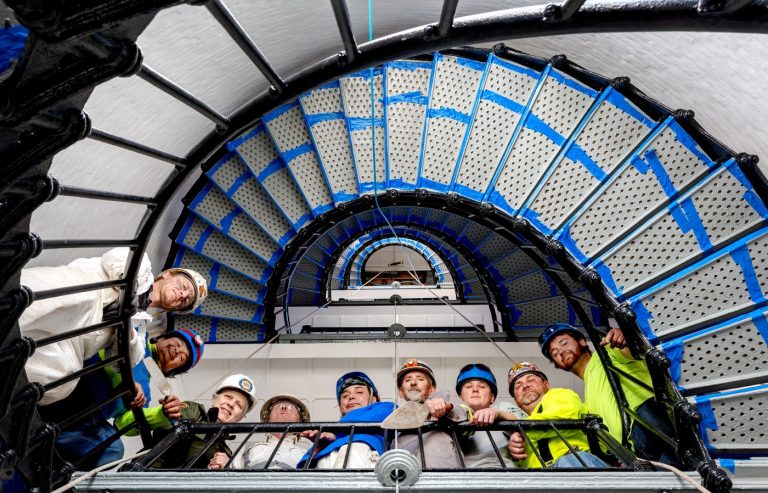When 20-year-old Paco Rojas woke up in his hospital bed at Santa Clara Valley Medical Center, the catastrophic crash that landed him there on Nov. 3, 2023 was a blur.
That night, a drunk driver traveling 150 mph on the I-280 ramp slammed into his red Toyota GR86, busting the gas tank and igniting the car into flames. Rojas rushed out of the burning vehicle, fell off the overpass and broke his femur and pelvis.
With over 90 percent of his body burned, Rojas underwent 23 surgeries during the next several months, including skin grafts, reconstruction of his left eye and metal rods placed in his left leg.
“When I first got to the hospital, they really had their doubts if I would survive or if I would be able to even wake up from the coma,” he said.
Rojas was one of nearly 4,000 trauma patients at Valley Medical Center last year. The public Santa Clara County hospital was recently recertified as a Level 1 trauma center — the highest level — at a time when trauma cases are surging and a nearby hospital, Regional Medical Center, is about to downgrade its own trauma center.
In February, HCA Healthcare, the corporation that owns Regional Medical Center, announced that it would be closing its trauma center completely. But last month, it changed course and said the hospital would be downgraded from a Level II to a Level III facility with changes taking effect on Aug. 12. Despite the decision to keep some version of the trauma center open, East San Jose residents and some doctors at the hospital remain concerned about the impact.
Regional Medical Center currently serves about 2,450 trauma patients a year — roughly a fourth of all traumas in the county.
Dr. Renee Hsia, a professor of emergency medicine at the University of California San Francisco, said that although plenty of similarities exist between the capabilities of Level I and Level II trauma centers, the difference between Level II and Level III is “very large.”
At a Level III trauma center, she said they won’t have all subspecialties, like neurosurgery, on call, which would be necessary to treat patients who have head trauma.
Instead, they would have to go to one of Santa Clara County’s two Level I trauma centers: Valley Medical, eight miles away, or Stanford Health Care, more than 20 miles away. There are no other Level II trauma centers in the county.
Hsia, whose research has focused on the impact of trauma center closures, said such closures disproportionately occur in poorer areas, such as the neighborhoods served by Regional Medical Center.
“One of the things that we’ve learned over time is that a lot of these hospitals make decisions based not on patient volume or need, but on financial decisions,” she said. “Unfortunately, if you live in an area where you don’t have a good patient-payer mix — and that means commercially insured patients — then that hospital is less likely to offer specialized services.”
Trauma center closures, she said, also result in longer driving times and worse outcomes for patients. In 2014, Hsai cowrote a study that examined the impact of three Level I and Level II trauma centers closing in California. Between 1999 and 2009, she found that trauma patients with longer drives as a result of a closure were 21% more likely to die than those who didn’t.
Outside of Santa Clara County, the Bay Area only has four other Level I or II trauma centers. Zuckerberg San Francisco General Hospital and Trauma Center and Highland Hospital in Oakland are Level I facilities. Sutter Health Eden Medical Center in Castro Valley and John Muir Medical Center in Walnut Creek are Level II trauma centers.
Despite population growth in the Bay Area, the region has seen several hospital closures. HCA Healthcare Corporation closed San Jose Medical Center in 2004 and shuttered Regional Medical Center’s maternity ward in 2020. In the East Bay, Doctors Medical Center in San Pablo closed its doors in 2016, leaving West Contra Costa County without a hospital. Alta Bates Summit Medical Center in Berkeley, which is owned by Sutter Health, is also expected to close in 2030, prompting concerns about longer emergency room wait times at nearby hospitals.
In Regional Medical Center’s case, Hsai said it’s hard to predict what the impact will be.
A spokesperson for the hospital said in a statement that “doctors, nurses and medical staff remain committed and are energized about providing outstanding healthcare to keep patients healthy.”
“With support from our emergency service partners, our dedicated medical team members are focused on delivering high-quality health care through our 20 specialty services and increasing our 24-7 Emergency Department capacity from 43 to 63 beds,” the Regional Medical Center spokesperson said.
Dr. Adella Garland, Valley Med’s trauma medical director, said the hospital is still trying to gauge what the trauma patient load will look like come Aug. 12.
Related Articles
Photos: Mass Casualty Exercise at Valley Medical Center
“When trauma centers have closed in the state of California, the patients who are adversely affected are those where transport time was increased after closure,” she said. “You could say ‘Well let’s divvy (the cases to each trauma center) up 50/50,’ but you have to be more cognizant of the geography, the transportation and the acuity of patients to be able to mitigate or lessen the effect of the closure of a trauma center.”
The hospital is already grappling with more traumas this year with cases up more than 25% from January to May 2024. Garland said that number equates to about two additional trauma patients a day.
It’s unclear why it’s increased. Garland started worked at Valley Med about 25 years ago, and said the hospital has doubled the number of annual trauma patients over that time, with some of that being driven by Silicon Valley’s growth.
“We are constantly evaluating the system and the staffing to make sure that we have sufficient staffing for the number of patients that we see,” she said.
In 2023, car crashes, like the one Rojas was in, accounted for 45% of all trauma cases at Valley Med. Falls accounted for 31% of cases and interpersonal violence made up 8%. Pedestrian incidents and bicycle crashes each accounted for 6% of cases.
Valley Med is uniquely positioned in the Bay Area’s trauma care landscape as the only hospital in the region that has the capability to treat burns directly in its trauma center.
Dr. Clifford Sheckter, the hospital’s medical director for the burn center, said a lot of trauma patients are also burn patients. In Rojas’ case, he was taken to Stanford Hospital first before he was flown via helicopter to Valley Med because of the severity of his burns.
Rojas said he hasn’t lingered on what his life would be like if he hadn’t been out on that November night. The “friendly faces” at Valley Med he said helped him realize that what happened in the past was the past and that he could continue to “get better and just keep moving forward.”
After more than eight months in the hospital, Rojas recently returned home, but he still has more surgeries to go. The experience has given him a new lease on life, and in conversations with his doctors and nurses, he realized he wants to become a veterinarian.
“It makes me feel grateful for the second chance,” he said. “Basically like another shot at life, and it gives me more appreciation for what I have and the people that stayed by my side.”
Paco Rojas looks at one of his cats, Princess, at his home in San Jose, Calif., on Thursday, Aug. 1, 2024. Rojas was hit by a drunk driver last year. His car went up in flames and he stumbled out and fell off the overpass. Since then he’s had 23 surgeries and is expected to walk again later this year despite his poor prognosis. (Dai Sugano/Bay Area News Group)












